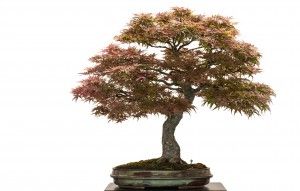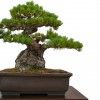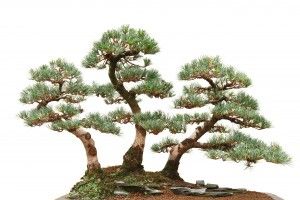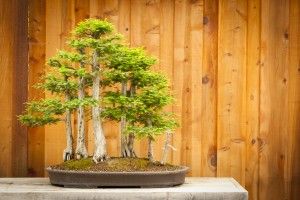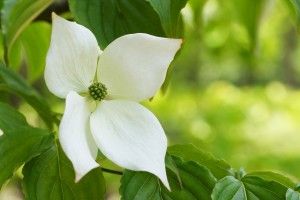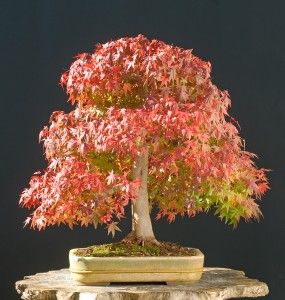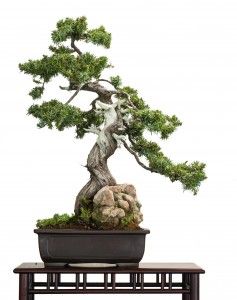 Juniper Bonsai
Juniper Bonsai
Juniper Bonsai are a well known tree species suitable for bonsai training. They are a fast growing tree known for producing compact foliage with resinous wood. This makes them perfect for growing into the contours of rocks and dead wood. This outdoor bonsai tree is perfect for beginners, because it is very forgiving of mistakes. Typically, those mistakes add character to the tree which can be a blessing in the long run.
Japanese Maple Bonsai
Japanese Maple Bonsai make for an extravagant outdoor bonsai tree. The fall colors it can produce, along with the aged appearance of the trunk, make this a highly sought after bonsai candidate. The leaves of a maple can be easily reduced, which is a requirement on a bonsai species. Defoliating this tree after spring will force the tree to grow leaves back, but in a much smaller form.
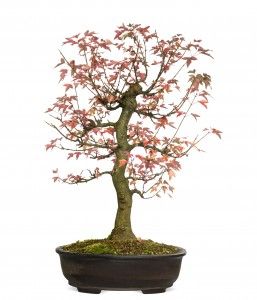 Trident Maple Bonsai
Trident Maple Bonsai
Trident Maple are used often as bonsai specimens due to what they offer: large roots that can be trained to root-over rock-formations rather easily. Another aspect of this species is the three-lobed leaves they produce. These leaves turn shades of yellow, orange, and red in the fall and make a stunning fall bonsai. This fast growing tree is quite hardy, but frost can damage them if not protected.
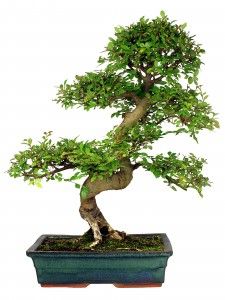 Chinese Elm Bonsai
Chinese Elm Bonsai
Chinese Elm Bonsai are perfect as indoor or outdoor bonsai trees. They grow large, aged trunks and small clumped leaves. They can be grown outdoors in areas that do not dip below 20 degrees. If it does drop below that temperature in your area, protect the tree during winter or move it indoors.
Japanese Black Pine
Japanese Black Pine are one of the most classic Pine outdoor bonsai species. They are very vigorous trees that reach impressive heights in the wild. This species is very tolerant of poor soil conditions, growing naturally in barren, stony soils. Black Pine can survive drought and survive dry soil and almost any unwanted conditions. These bonsai are known for their long lifespan and will to survive.
Japanese White Pine
Japanese White Pine make a perfect candidate for an outdoor bonsai tree. These need to be grown outdoors in an area with a winter season to allow dormancy. These trees are hard to grow from seed and are typically grafted onto Black Pine rootstock. These trees are a sort of status symbol in the bonsai community due to the time and effort it takes to grow one successfully.
Bald Cypress
Bald Cypress are a unique bonsai because they require so much moisture to grow. They are typically grown with the soil completely submerged in water. These trees can be grown to look extremely old and beautiful rather quickly. This species is typically grown outdoors because it needs a dormant season in order to survive.
Dogwood Bonsai
Dogwood trees make for some of the most beautiful flowering outdoor bonsai. They produce large white or pink flowers in late fall, followed by large red berries. This fast growing tree can be brought indoors during bloom for display as long as it is returned outdoors after a few days. During the fall, it produces plenty of vibrant colors before the leaves fall.
